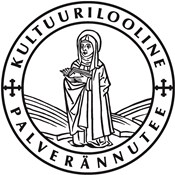Puutli village and church
The name of Puutli village comes from the name of a peasant who lived here. There is mention of Puhtly Martti in the 17th century, the same family name occurs in different spellings (Putle, Puttele) and in 1820, Putli village was recorded.
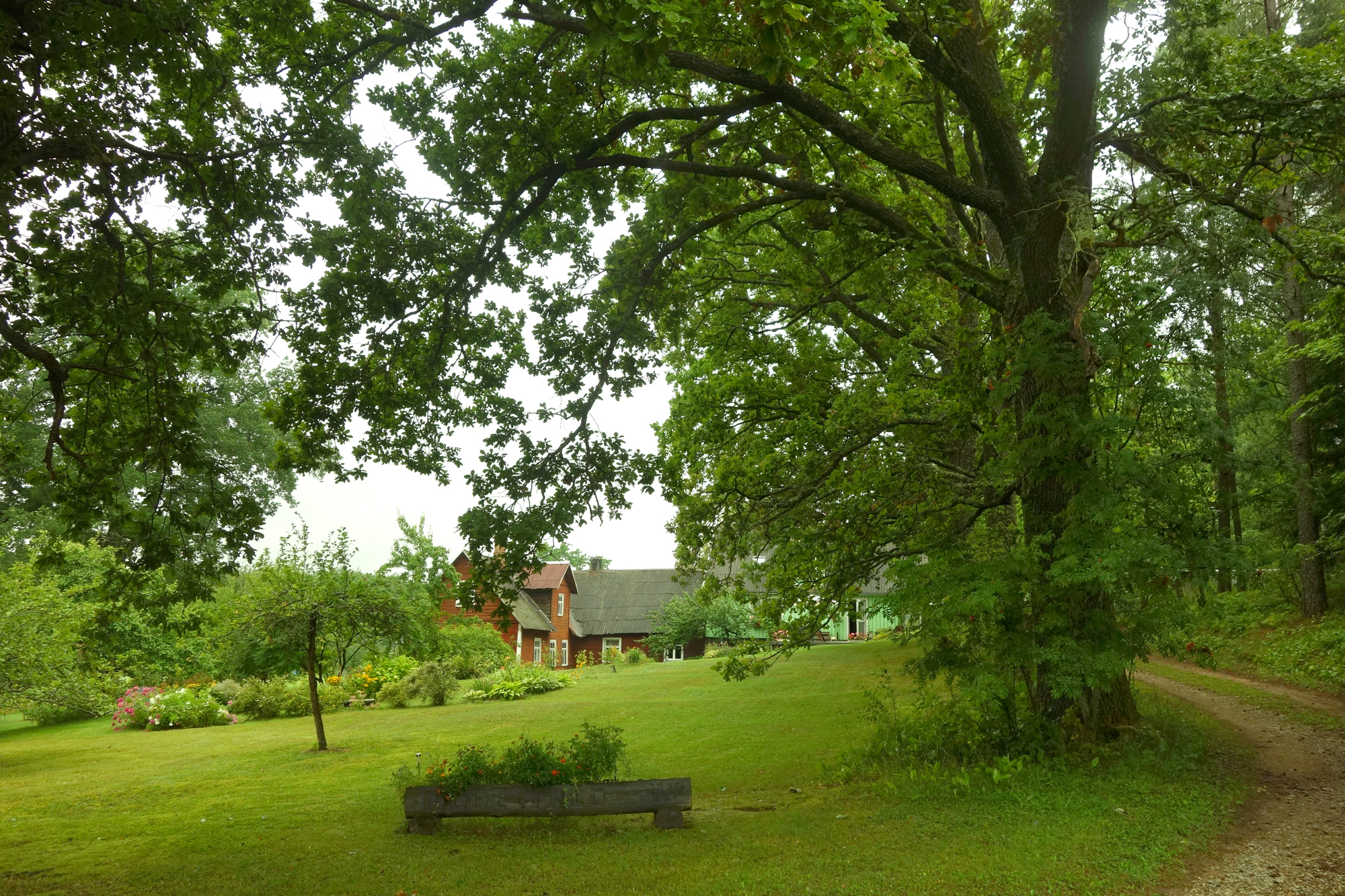
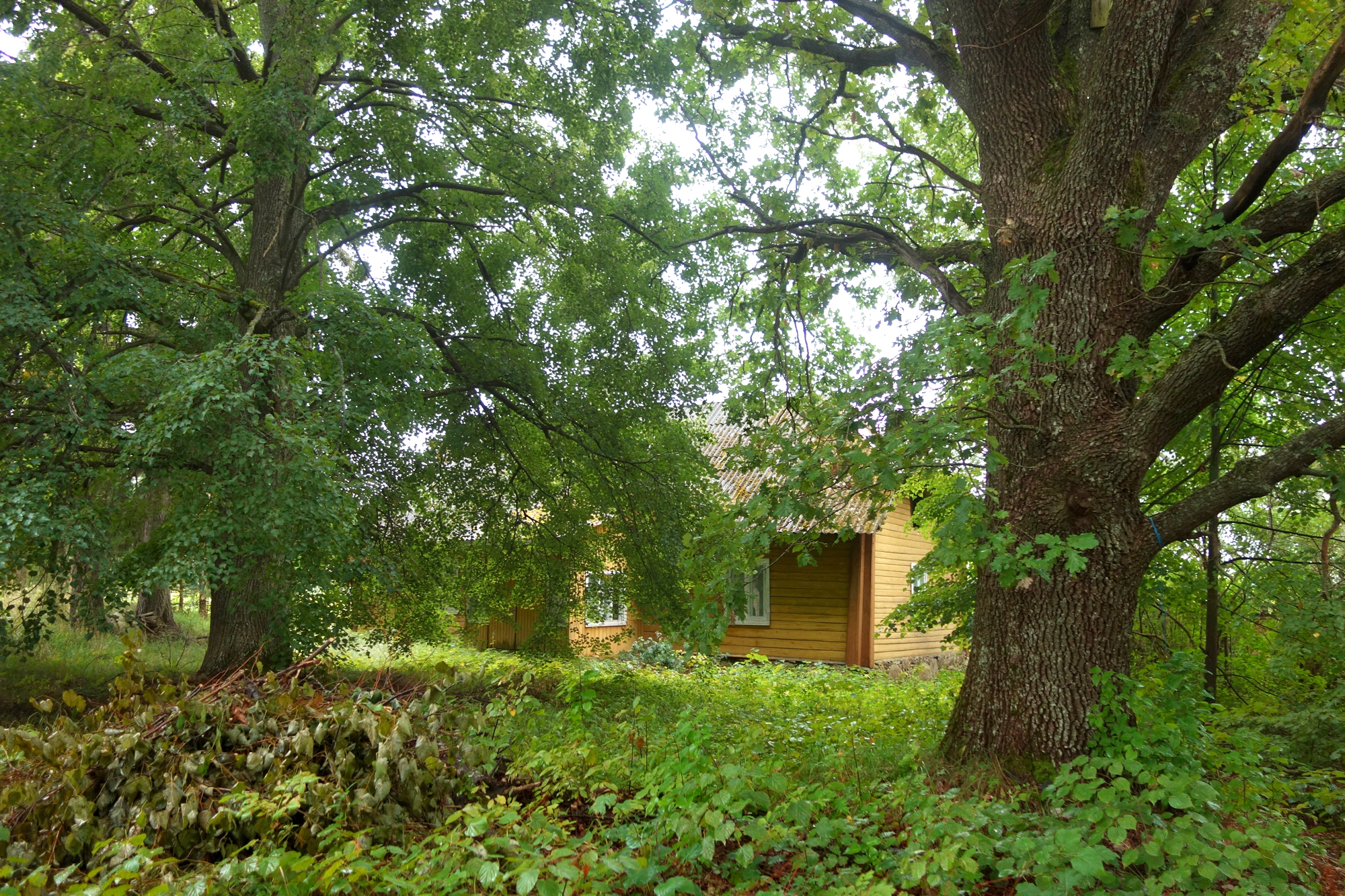
We turn left, left again, pass Puutli-Sõrra and Madara farms and reach Kõrboja farm.
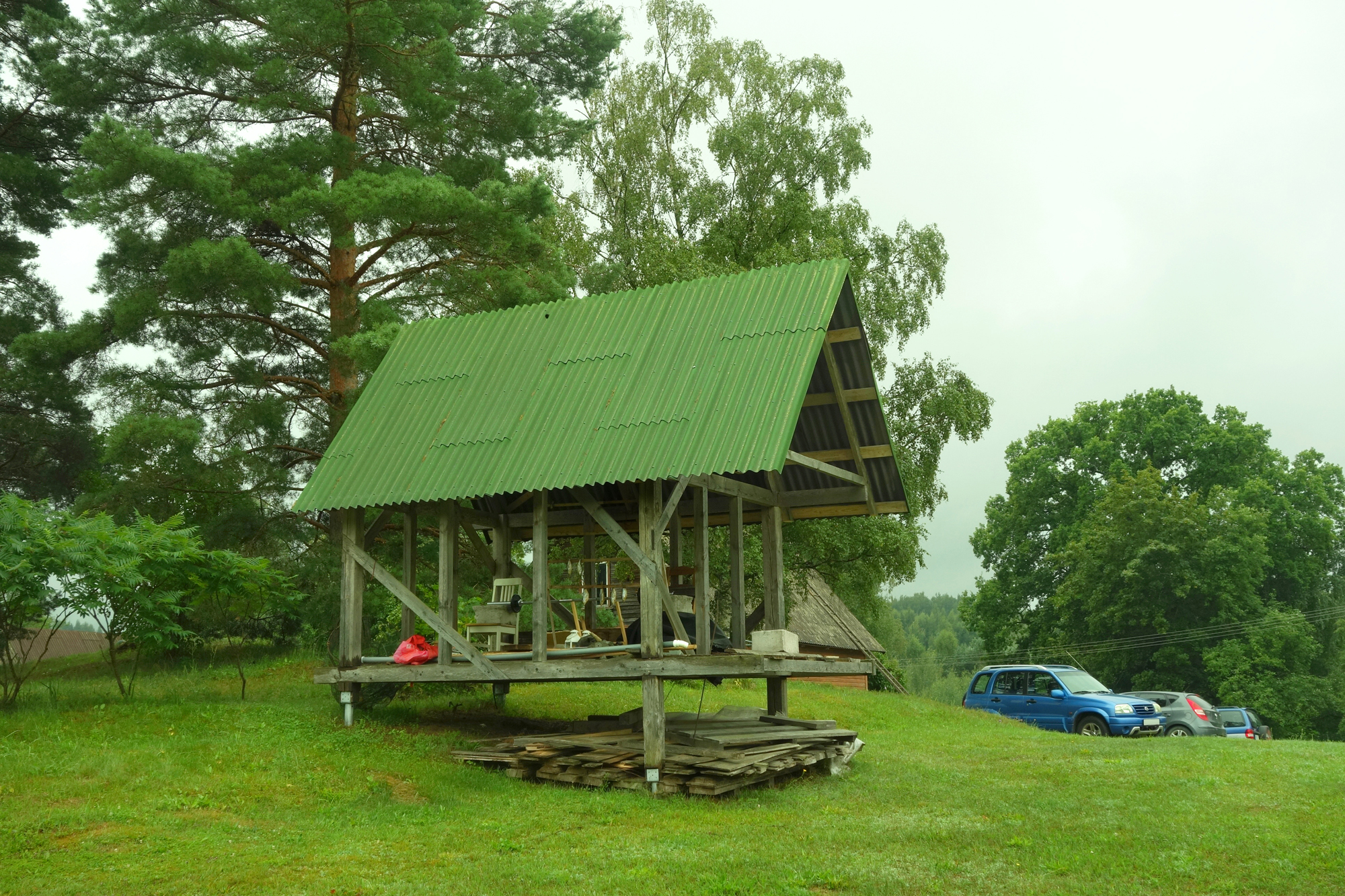
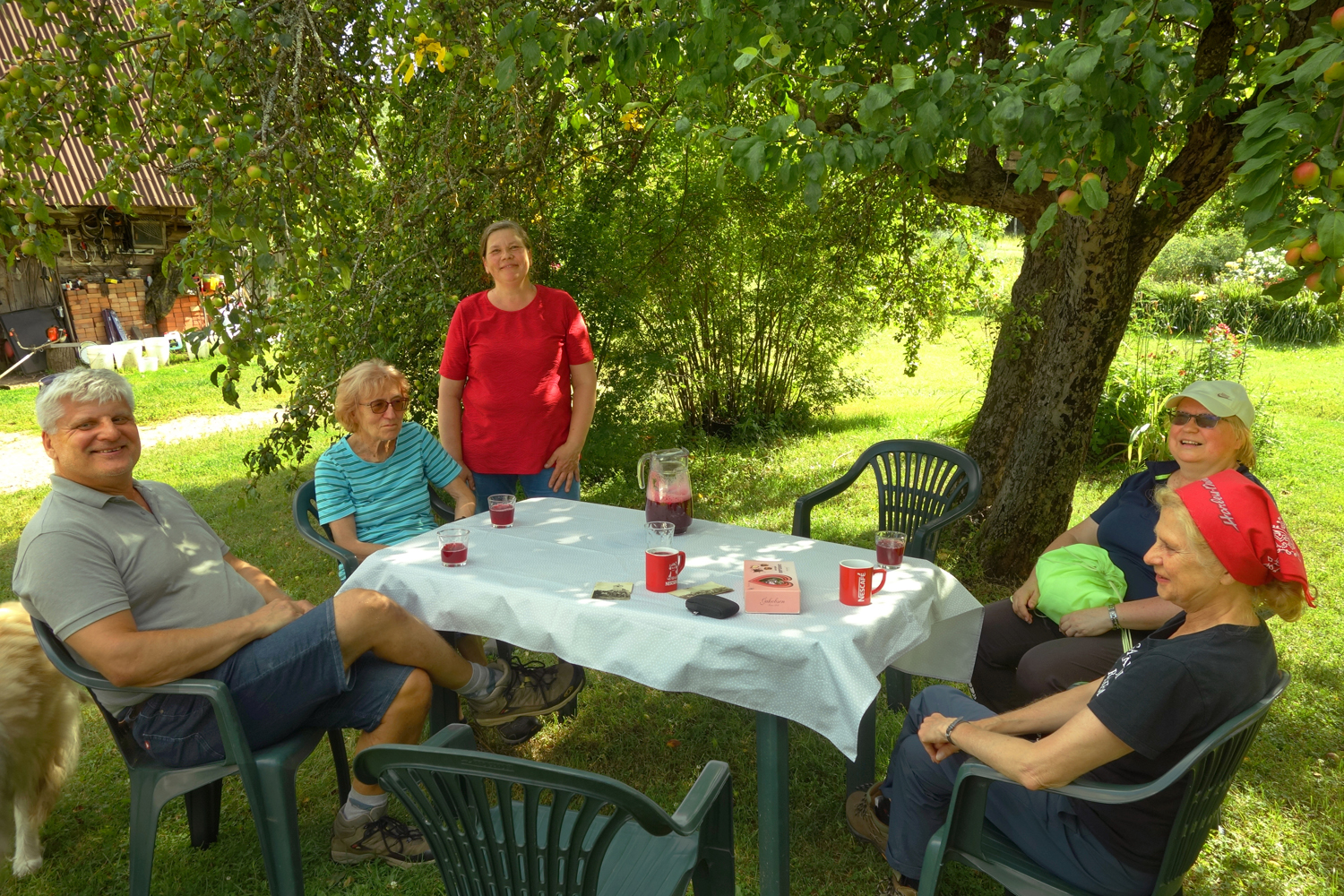
Kõrboja people always kindly point the way to Puutli church or the memorial stone to the Forest Brothers. The church is actually quite near.
.jpg)
Nine Russian families from Irboska settled here in the 1920s. After the War of Independence they had become Estonian citizens and now returned to Estonia from Russia. They bought a few farms and divided them up between them, their children attended Loosi school to master Estonian. At some point they decided to build a church. One of the settlers donated the land for the church and cemetery, money was raised and the church was completed. Orthodox congregations from Võru and Petseri supported as well.
Puutli St Nicholas Church is among the most wonderful finds during all the years of preparing our pilgrimage route. When the Old Believers settled here after escaping to Estonia from persecution in Russia, they managed to build a church in 1935, on the initiative of brothers Grihin. Before that there was hardly anything on Valgõmägi Hill.

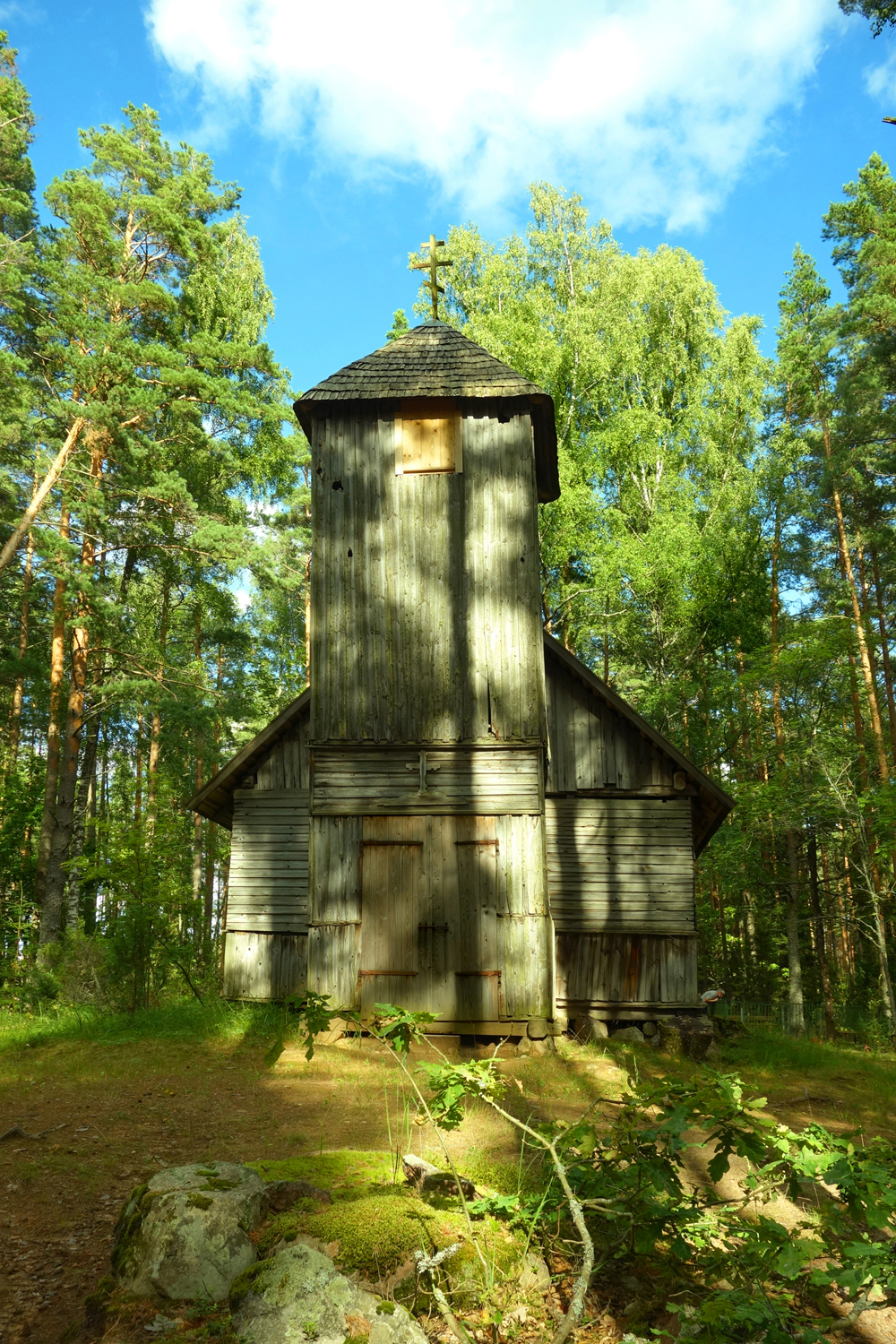
Photo of consecrating the cross of the Puutli church tower in 1937. (Private collection)
In due course, a cemetery was established.
The first to be buried at Puutli cemetery in 1930 was Aleksander Grihin. The hill had hardly any trees then, just a few pines. He was buried near them. The last burial took place in 2013. The new generations gather in Puutli in August every year to commemorate the dead.
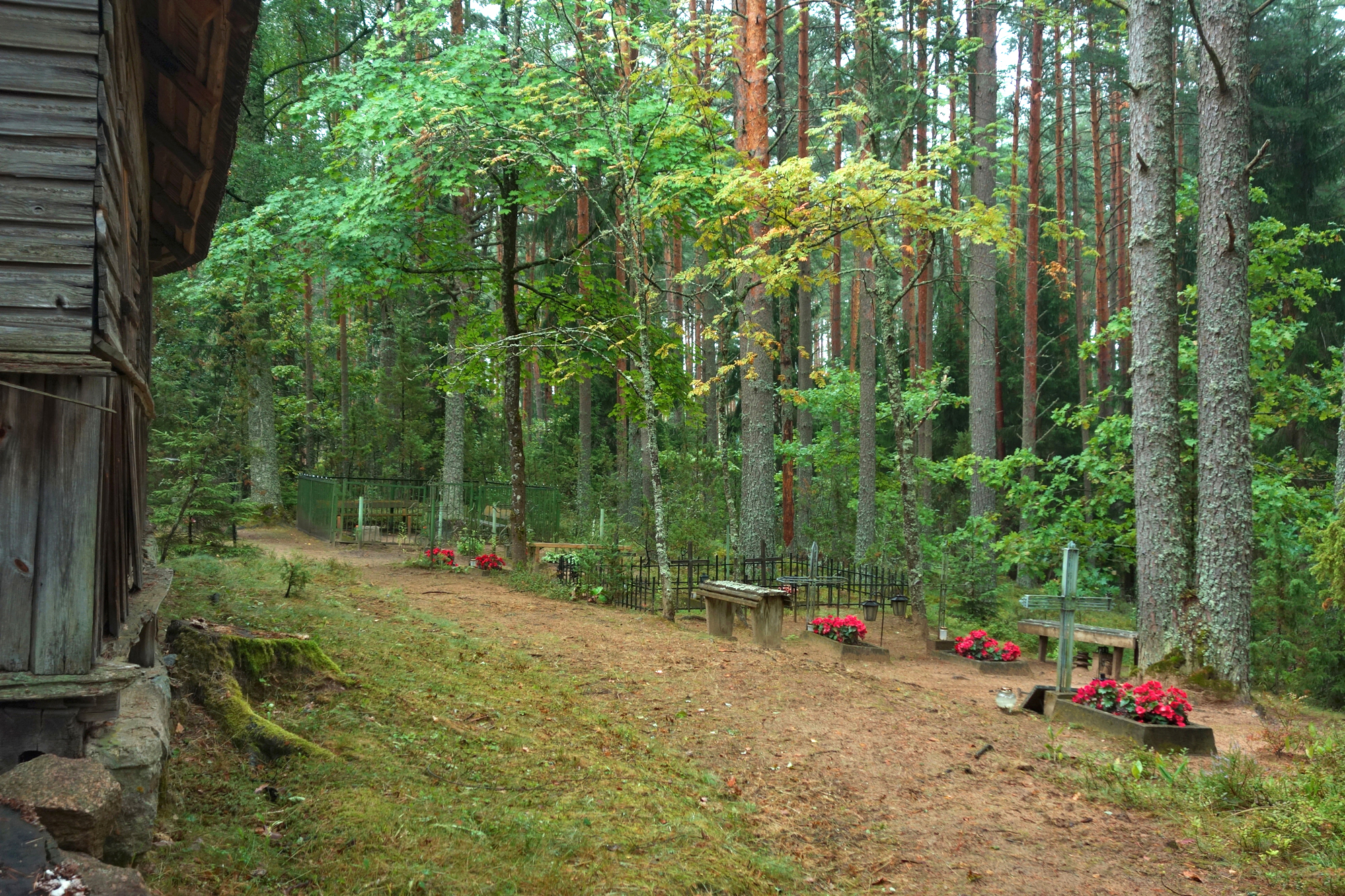

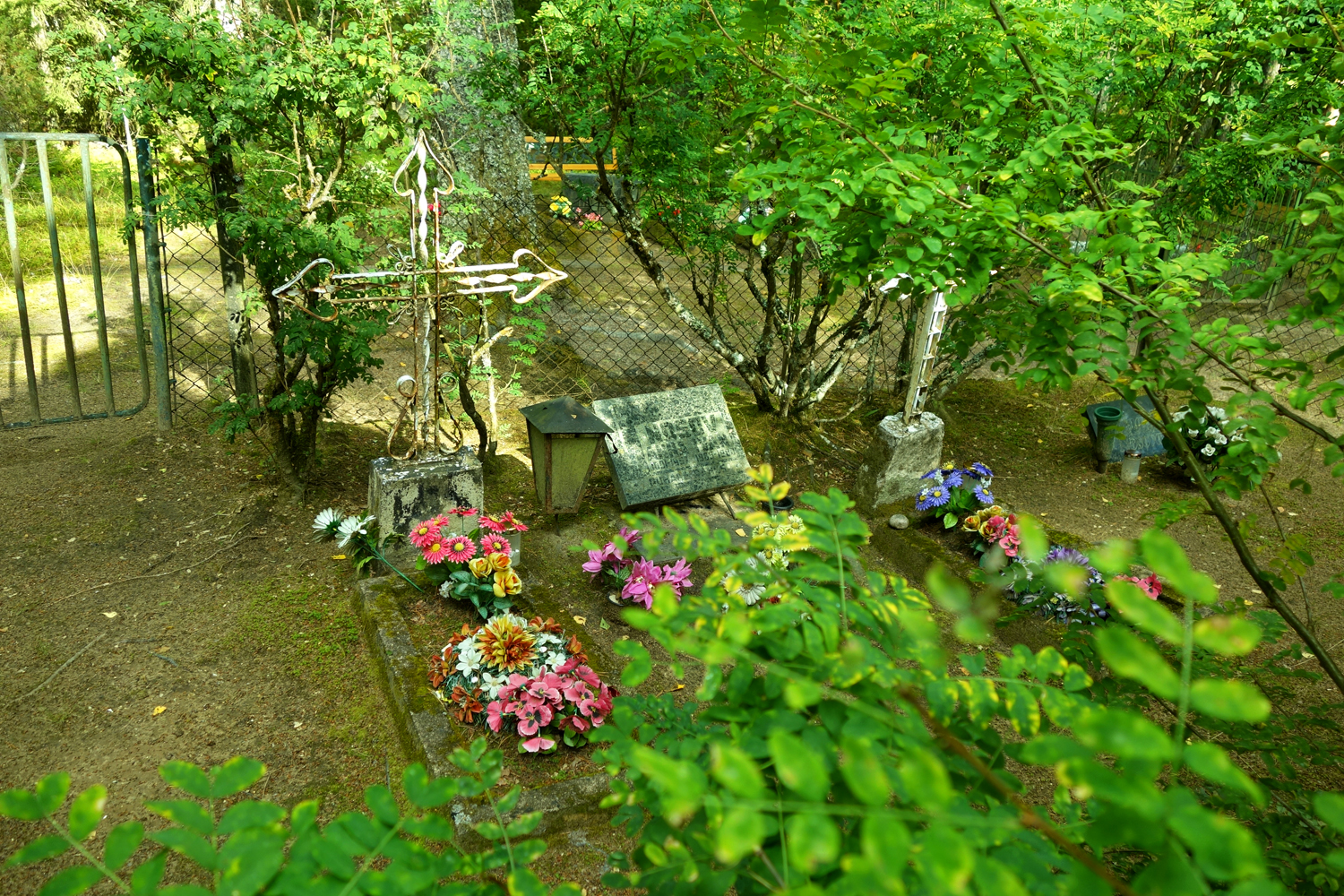
Graves of the Grihin and Nosov families at Puutli cemetery.
However, the coming years were not kind to local people, the congregation was split up, the church fell into disrepair and was looted.
NGO Vanaajamaja decided to at least make the crumbling Puutli church safe. In 2015, 2016 and 2019 the beam walls were bolstered up, a new shingle roof was built, the bodywork of the tower was restored, the tower got new shutters, the church hall was whitewashed. The work was supported by the Heritage Board, State Forest Management, Vastseliina local government and local community.
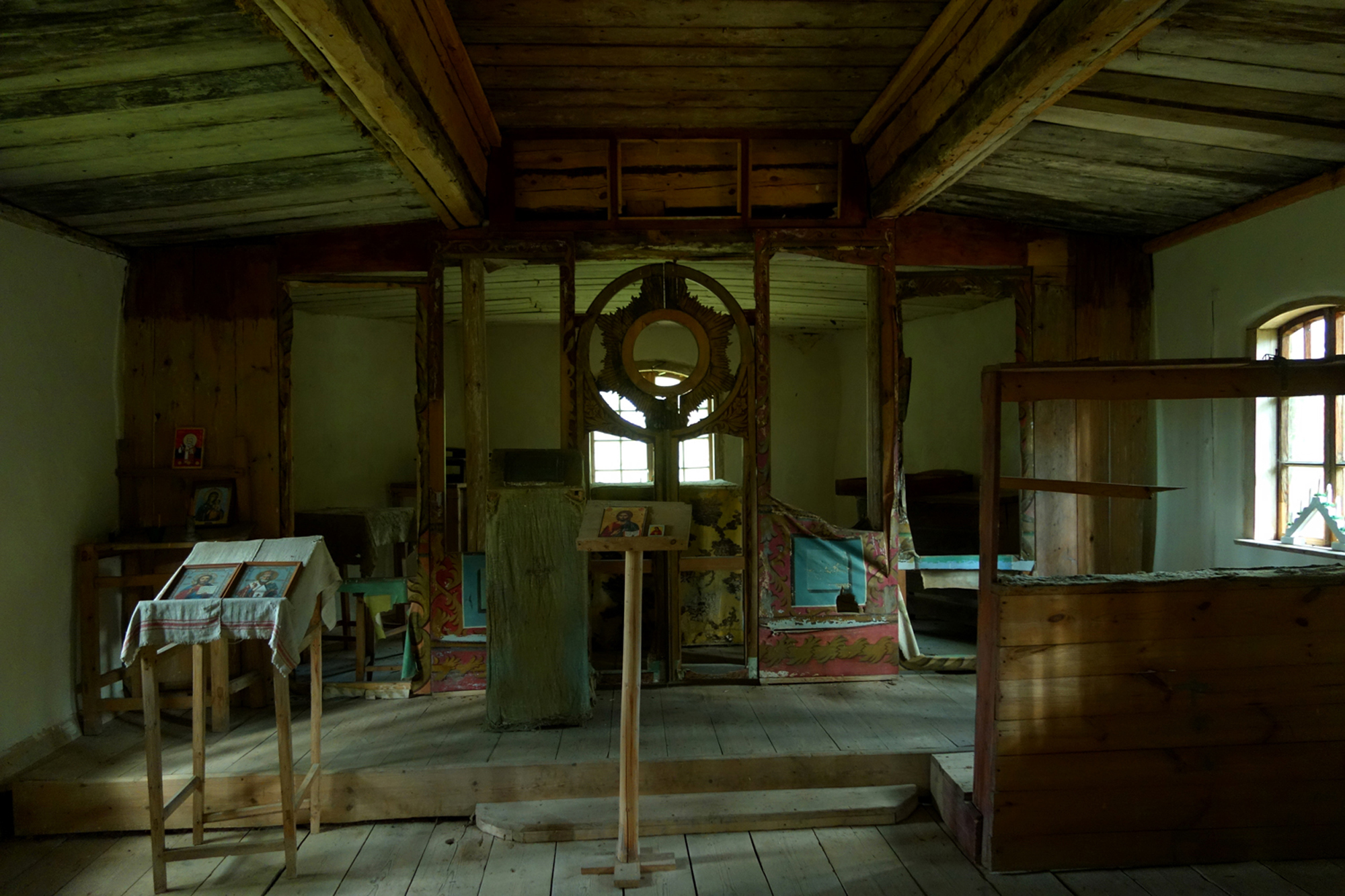
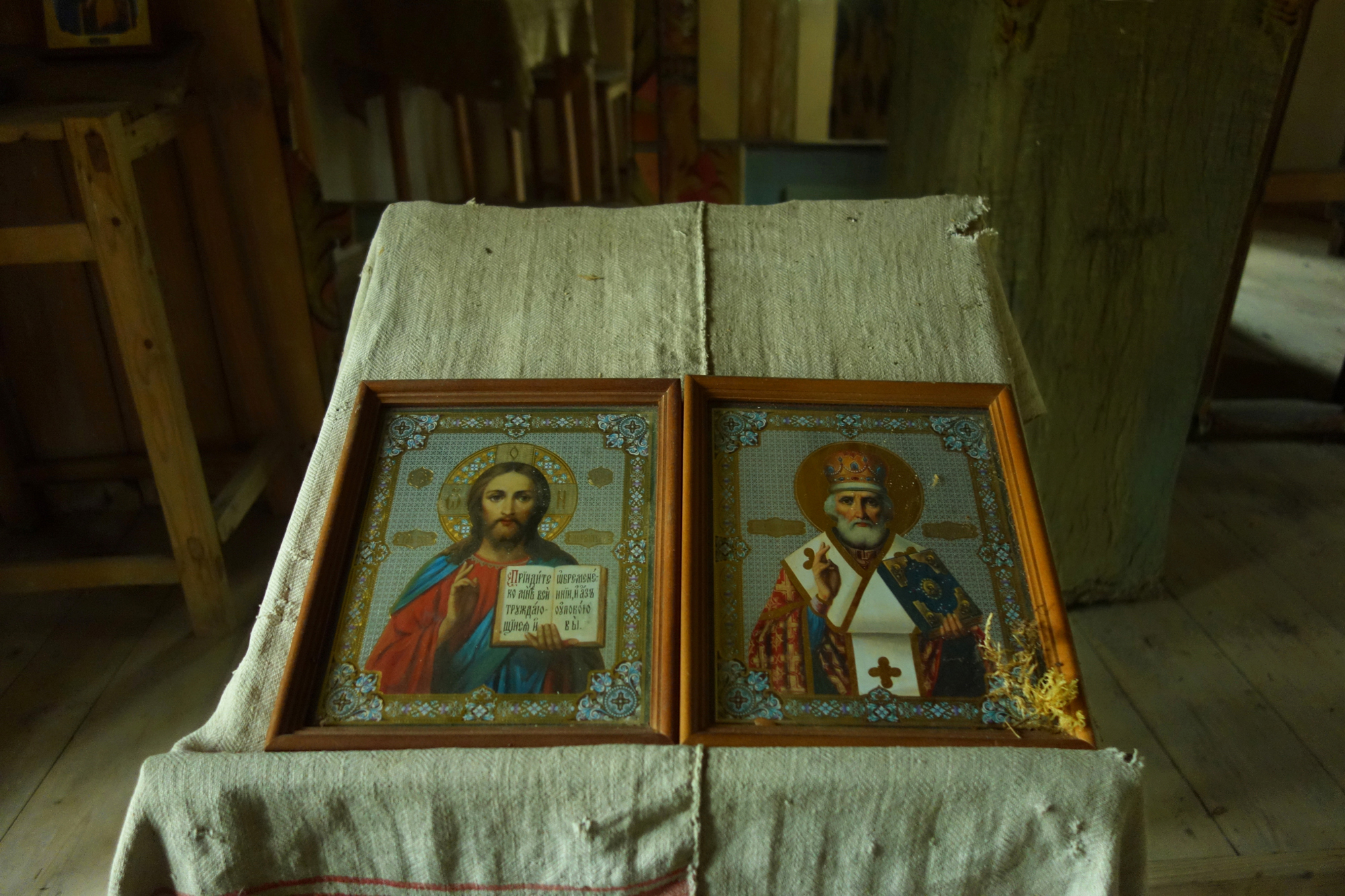
A forest has grown around the church that now stands there in peace and quiet. Like as secret.
People do not go that way. When we were looking for the Puutli church for the first time, we asked around, but locals assumed we would never find it. Indeed we would have failed, but luckily the local blacksmith Andres Kunnus personally showed us the way. He in turn was guided on the phone by a member of the Defence League, Urmas Juhkam. In such a complicated manner we reached our goal.
It is about 10 km from Pikakannu to Puutli church.
Daila Aas, summer 2021
Sources
Timo Palo. Puukirik Puutlipalo metsas – Eesti Loodus nr. 1, 2017
https://www.eestikirik.ee/mahajaetud-kirik-puutlipalus/
https://vanaajamaja.ee/et/kogukonnaprojektid/puutli-kiriku-konserveerimine/
https://digiteek.artun.ee/download/newwin-download/oid-9046/9046.pdf?what=orig&show=1
